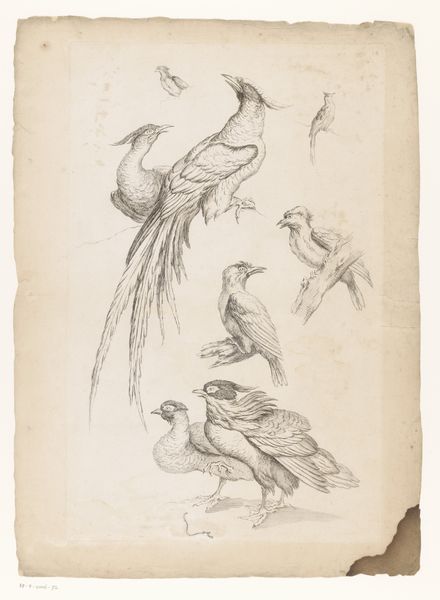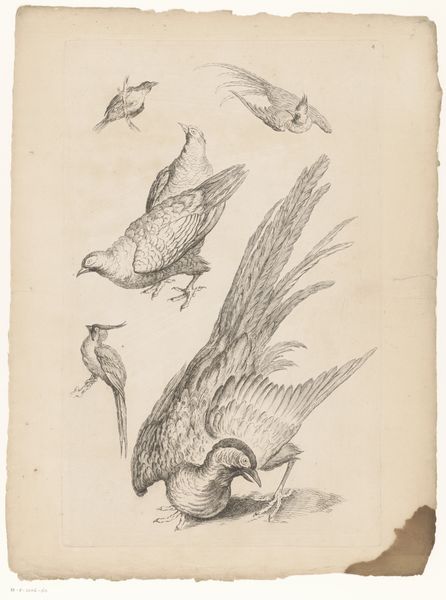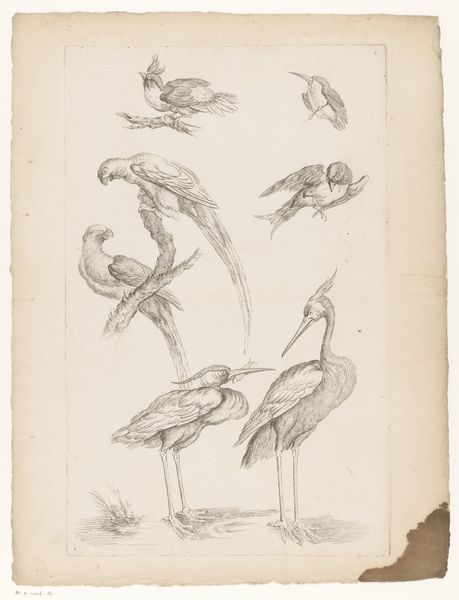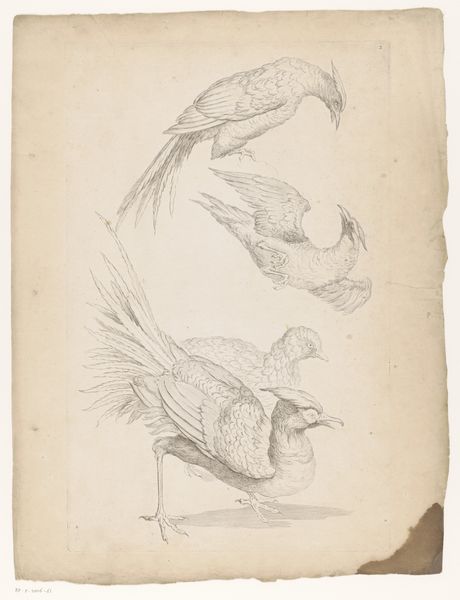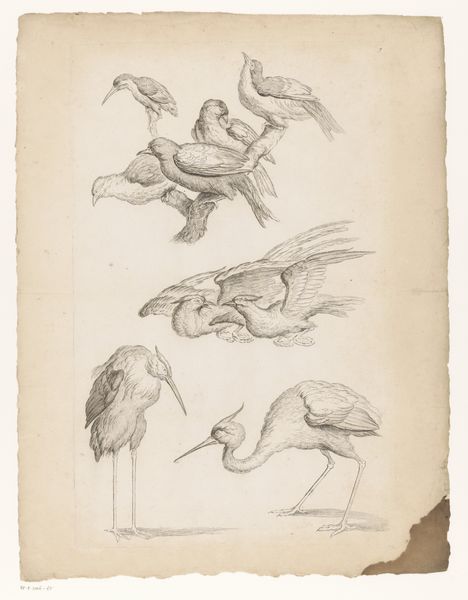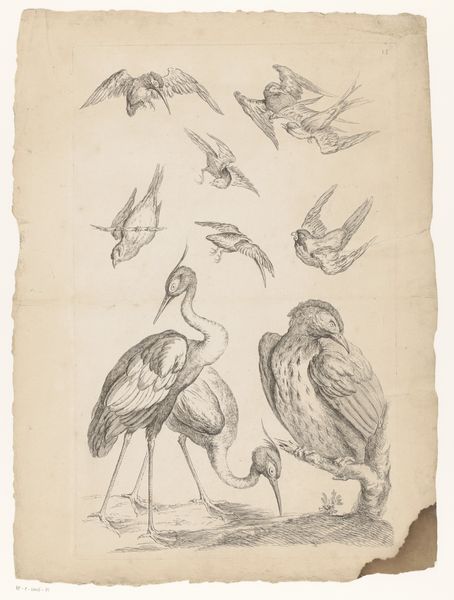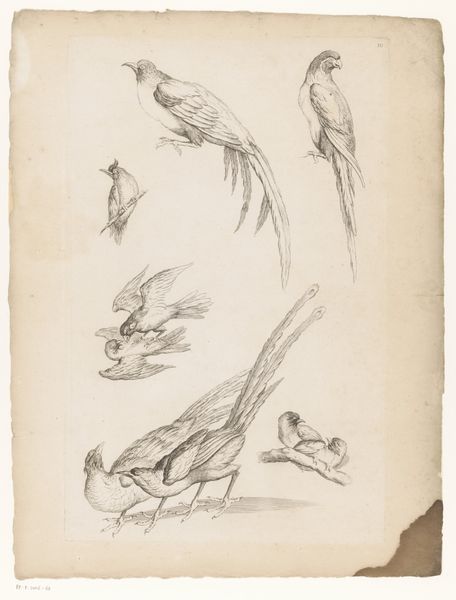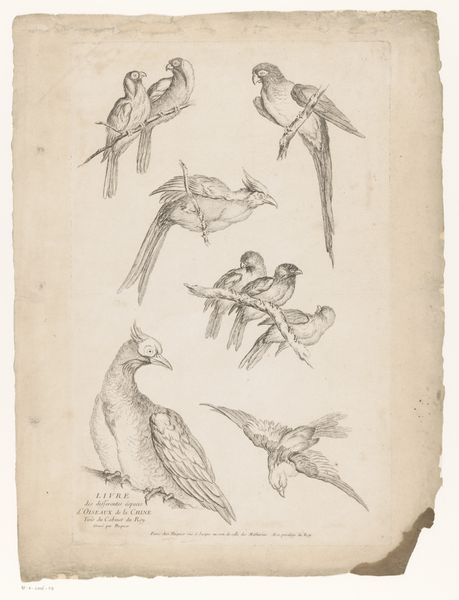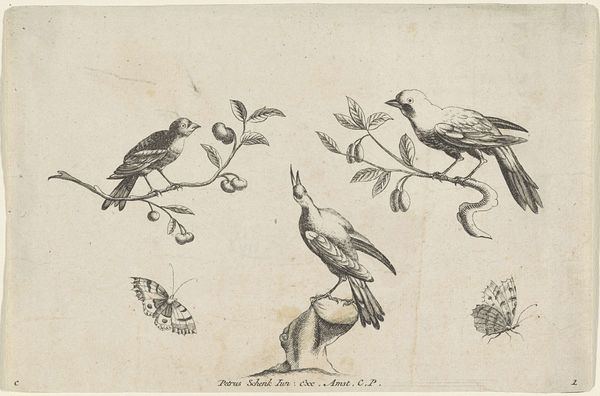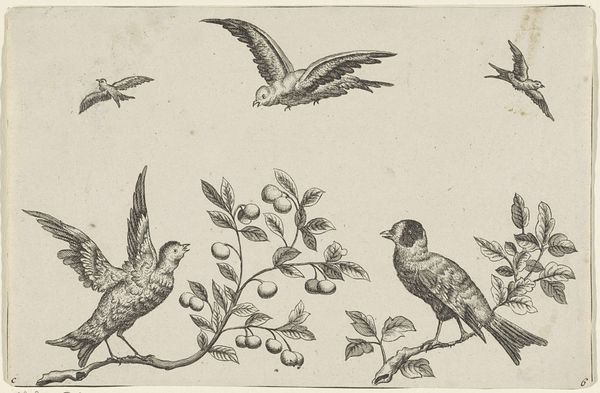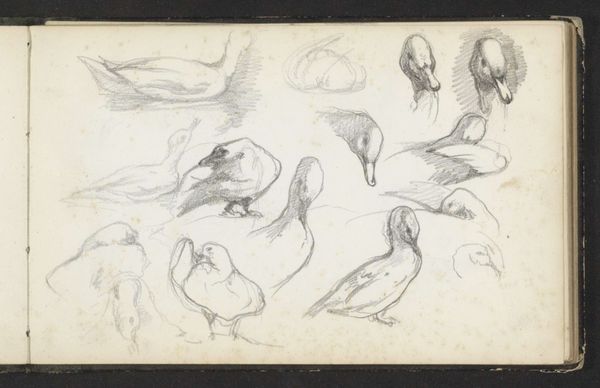
Negen Chinese vogels, waaronder eenden, een ijsvogel en mogelijk paradijsvogels 1742 - 1750
0:00
0:00
gabrielhuquier
Rijksmuseum
drawing, paper, ink
#
drawing
#
pen sketch
#
pencil sketch
#
bird
#
paper
#
ink
#
realism
Dimensions: height 543 mm, width 340 mm
Copyright: Rijks Museum: Open Domain
Curator: Here we have "Nine Chinese Birds, Including Ducks, a Kingfisher, and Possibly Birds of Paradise," an ink drawing on paper, likely created between 1742 and 1750. The artist is thought to be Gabriel Huquier. Editor: What immediately strikes me is the composition – almost like a scientific study, yet rendered with such delicate detail. It’s a flurry of feathers and forms, unified by the artist's linework. Curator: Yes, and consider how birds, especially those from exotic lands like China, were potent symbols of trade, exploration, and the pursuit of knowledge during that era. Each bird embodies stories of distant lands, brought closer through artistic representation. Editor: Indeed. Focusing on form, note how each bird presents a unique textural experience – the crisp precision defining feathers juxtaposed with soft, suggestive lines indicating volume and shadow. Semiotically, this interplay elevates the image beyond a mere naturalistic sketch. Curator: The repetition of bird imagery reinforces this idea of the interconnectedness of cultures and continents. Ducks and kingfishers, alongside possible birds of paradise, speak to the range of ecological diversity, presented side by side as specimens. Editor: And that monochromatic palette! The use of hatching and cross-hatching establishes tonal range, transforming simple ink into form, surface, and movement. Curator: Given the trade between China and Europe, these avian images likely functioned as prototypes or models. Perhaps they even found themselves replicated onto luxury goods bound for Western markets, carrying deeper connotations of Eastern aesthetics. Editor: I am seeing movement—it looks as if the artist aimed to study all stages of bird movement. Some diving, and others preening or resting. It suggests a prolonged period of direct observation and anatomical accuracy, almost an aesthetic act of cataloging the natural world. Curator: The meticulous details combined with dynamic positioning really evokes the spirit of 18th-century naturalism and a nascent era of global awareness. Editor: For me, it also reveals the subtle interplay between objective representation and subjective expression—how an artist's hand imbues even a scientific illustration with life, character, and even charm. Curator: Absolutely. It's fascinating to realize the lasting echo of globalization embodied in each delicate pen stroke. Editor: Yes, the sketch invites a contemplation of the artist’s mark within cross-cultural encounter.
Comments
No comments
Be the first to comment and join the conversation on the ultimate creative platform.
